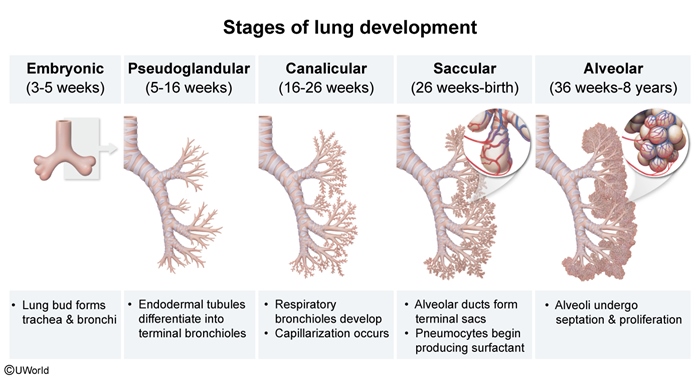Bronchopulmonary Dysplasia
Article Sections
Introduction
Bronchopulmonary dysplasia (BPD) is a chronic lung disease found in preterm infants. By definition, BPD is diagnosed in preterm infants who require supplemental oxygen or respiratory support beyond 28 days postnatal age or 36 weeks postmenstrual age and who have features of parenchymal lung disease on chest radiograph.
Pathogenesis and risk factors
Fetal alveolar development occurs in stages, beginning with protrusion of the main bronchi from the foregut during the embryonic stage. BPD can occur when preterm birth disrupts the late canalicular and early saccular phases of fetal lung development (Figure 1), resulting in:
- Disrupted alveolarization with disrupted terminal sac formation and septation leads to large alveoli with decreased surface area for efficient gas exchange.
- Disrupted capillarization leads to abnormal distribution of pulmonary capillaries within the septa. In addition, thickening of the muscular layer of the pulmonary arteries leads to increased pulmonary vascular resistance.
Continue Learning with UWorld
Get the full Bronchopulmonary Dysplasia article plus rich visuals, real-world cases, and in-depth insights from medical experts, all available through the UWorld Medical Library.
Figures
